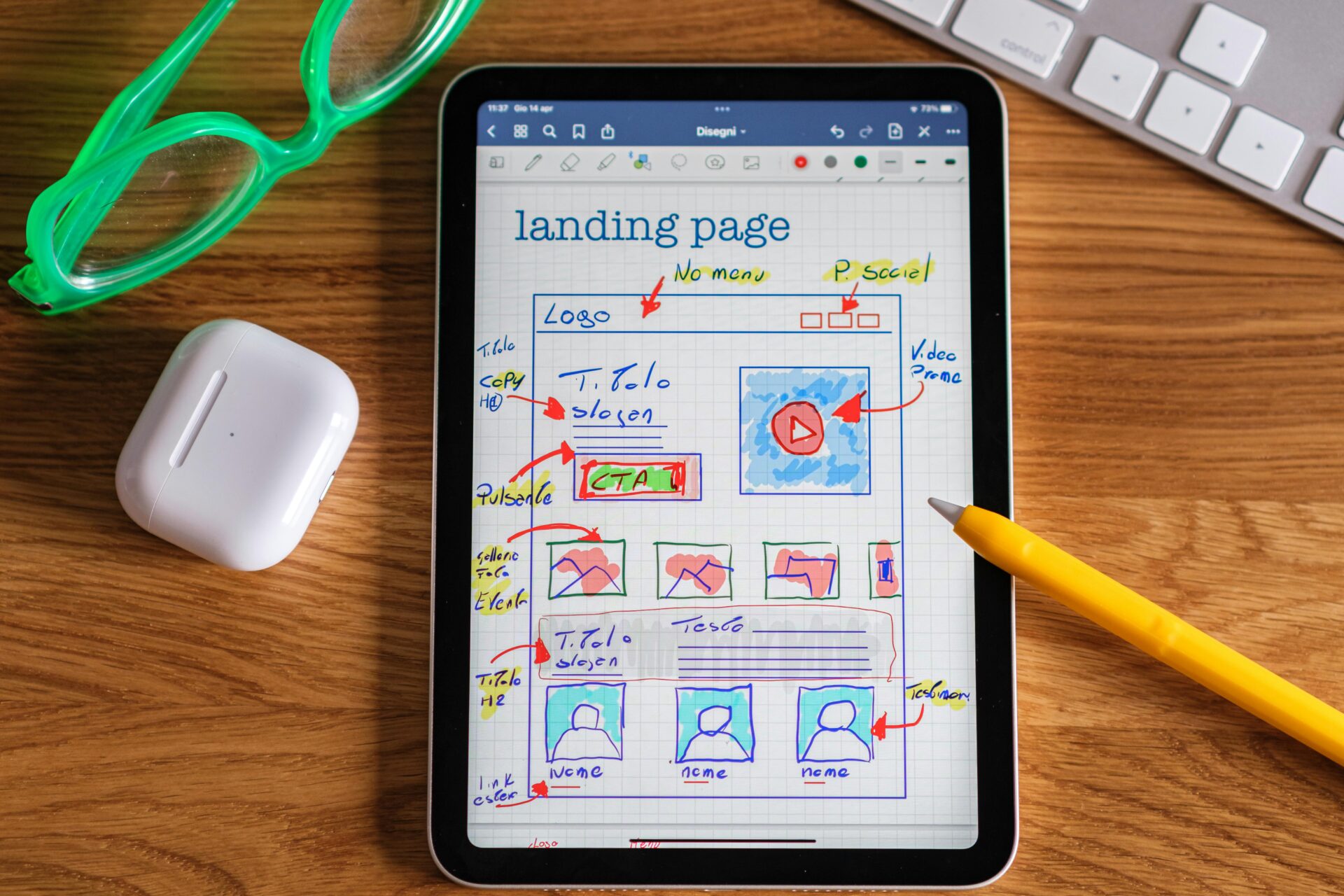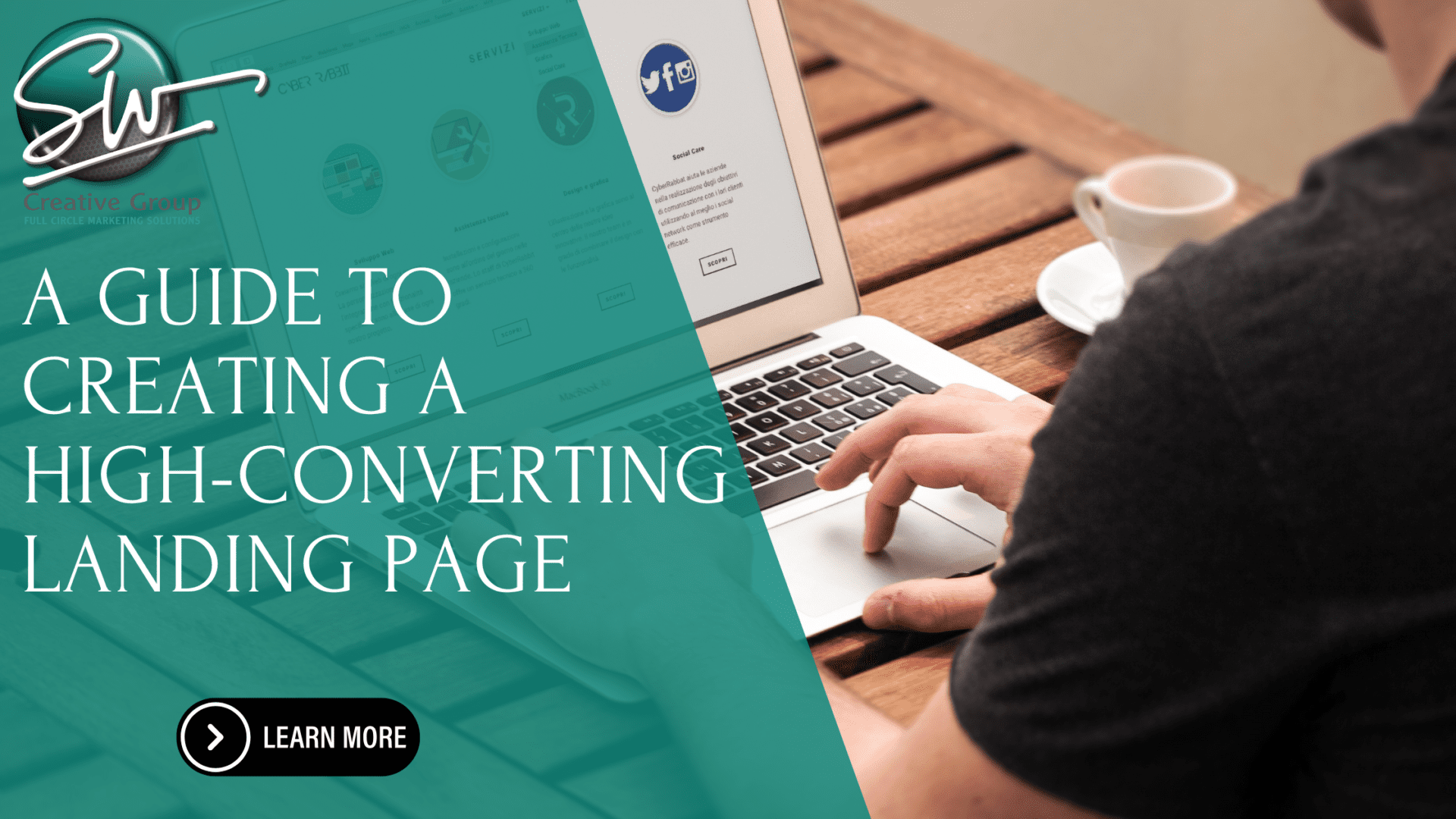A landing page is often the first interaction a visitor has with your business. It can be the turning point where a user decides to buy, subscribe, or leave. A good landing page is more than just a place to collect clicks—it plays a key role in driving leads and growing revenue.
Let’s explore how to build a high-converting landing page. You will learn about effective strategies, design choices that work, and SEO techniques that bring in traffic. Each section will offer practical insights to help you create landing pages that get results.
Start with a Clear Purpose
Every landing page needs one clear goal. Whether it’s getting signups, selling a product, or downloading a guide, that goal must be easy to understand at first glance. A landing page should not confuse the user with too many options.
Once you decide on the main goal, shape every element on the page to support that goal. The headline, visuals, form, and call to action should all lead visitors in one direction.
Write a Focused and Persuasive Headline
The headline is the first thing a visitor notices on your landing page. It often decides whether they stay or leave. Because of this, it must grab attention quickly while staying clear and easy to understand. The best headlines are short, relevant, and directly linked to the user’s need or interest. Instead of using broad or catchy phrases, speak to a specific problem or outcome your visitor is likely looking for.
Avoid making users guess what your page is about. A vague headline like “Welcome to Our Page” gives no useful information. Instead, use clear and direct language that communicates what you offer and why it matters. For example, if you’re offering a free consultation, say so right away. Be upfront and factual.
Consistency matters just as much. If the visitor came from an ad, email campaign, or social post, the headline should reflect the promise or message that led them there. A mismatch between the source and the landing page creates confusion and often results in the visitor leaving the page immediately. Matching the headline with the source message helps build trust and shows the user that they’ve landed in the right place.
A well-written subheadline can add further impact. While the main headline draws attention, the subheadline gives additional context or highlights one clear benefit of your offering. For instance, if the headline introduces a service, the subheadline can mention how it helps the user solve a key problem or save time. This one-two combination helps guide the visitor deeper into the page and encourages them to keep reading.
Keep the Layout Clean and Simple
A landing page should look neat and easy to read. Use white space to break up sections and avoid crowding the screen. Use a clear visual hierarchy—your most important message should stand out.
Avoid too many colors or fonts. Stick to a simple color palette that fits your brand. Use one or two fonts across the page for a consistent look.
Images should be relevant and high-quality. They should support the message instead of distracting from it. Avoid using generic stock photos that do not add real value.
Add a Strong Call to Action (CTA)
Your call to action (CTA) is one of the most important elements on a landing page. It tells users exactly what you want them to do next—whether that’s signing up, making a purchase, requesting a quote, or downloading a resource. The language you use in the CTA should be active, direct, and clear. Phrases like “Get Started,” “Download Now,” or “Book a Call” guide users toward action without hesitation. Avoid using vague or passive phrases such as “Submit” or “Click Here,” which do not convey the value of the next step or create a sense of urgency.
Beyond wording, the design of the CTA plays a big role in conversions. The button or form should stand out from the rest of the page without being distracting. Use a color that contrasts with your background while still aligning with your brand. The size of the button should be large enough to grab attention but not so large that it overwhelms the rest of the content. Placement matters too. Put the CTA where users are most likely to take action—typically after the headline, in the middle of the page, and again near the end if the page is longer. This gives users multiple chances to act when they are ready, but avoid repeating it too many times, which can make the page feel cluttered or aggressive.
If your CTA includes a form, keep it as short and simple as possible. Only ask for information that is absolutely necessary at this stage. For example, if you’re offering a downloadable resource, asking for a name and email is usually enough. The more fields you include, the more friction you create. Each extra question increases the chance that a visitor will abandon the form entirely. If you need more information later, you can always collect it in follow-up steps or emails. A clean, quick form reduces barriers and encourages more users to complete the action you’re aiming for.
Match Content with Audience Intent

Know who you are speaking to. A good landing page matches the language, tone, and content with the user’s needs. If your audience is looking for a quick answer, give them direct benefits and a fast path to the next step. If they need more detail before making a decision, add short, clear sections that answer their questions.
Use short paragraphs, headings, and visual cues to guide users through the content. This helps them scan the page and find what matters to them.
Build Trust with Social Proof
People are more likely to believe other customers than branded messages. That’s why adding social proof to your landing page can make a strong impact. When potential clients see that others have had a positive experience, it helps reduce doubt and builds confidence in your offering. Social proof creates a sense of credibility that no sales pitch can match.
There are many ways to show social proof. One of the most effective is through testimonials. These should come from real people who have used your product or service. Short quotes that focus on specific outcomes work best. Try to include the person’s name, photo, job title, or company. This makes the message feel more genuine and relatable. If possible, add video testimonials, as they provide tone and body language, which help convey sincerity.
Reviews are another valuable form of social proof. Highlight key reviews that reflect the common experiences of your customers. Choose ones that mention particular benefits, ease of use, or results achieved. Grouping these in a clean and well-designed section near your call to action can help users make quicker decisions.
Numbers also carry weight. If you’ve helped 10,000 customers, had 500,000 app downloads, or achieved a 98% satisfaction score, display those figures clearly. Real data is hard to ignore and signals that your business has been tested and trusted by many.
You can also include recognizable client logos or brand names you’ve worked with, especially if they are known in your industry. This gives the impression that your service is reliable and trusted by others with similar needs.
Improve Speed and Mobile Experience
A slow or broken page will lose users fast. Your landing page should load quickly on all devices, especially mobile. Test the page on different screen sizes. The layout should adjust without breaking. Text should remain readable, buttons should be easy to tap, and images should not slow down the page.
Use compressed images and limit scripts to keep loading time low. A fast, smooth experience builds trust and keeps visitors engaged.
Apply SEO Best Practices
A landing page also needs traffic to work. Good SEO practices help people find your page through search engines. Use a clear and descriptive URL. Include the main keyword in the page title, meta description, and within the content—but use it naturally. Avoid keyword stuffing.
Add headings (H1, H2, H3) to organize the content. Use the H1 tag for your headline and include keywords in your subheadings where they fit. Include internal links to relevant pages on your website. Add external links only when they add value and don’t distract from your goal.
Alt text for images helps with both SEO and accessibility. Describe each image briefly using relevant terms.
Test and Improve the Page
No landing page is perfect the first time. Use A/B testing to try out different versions. You can test headlines, button text, form length, and layout changes. Look at the data. Use tools like Google Analytics or Hotjar to see how users interact with the page. Track bounce rate, time on page, form submissions, and click-through rates.
Use these insights to adjust the content or design. Small changes based on real behavior often lead to better results over time.
Align Your Page with Your Marketing Channels
Your landing page must match the source that brings visitors to it. If someone clicks from a paid ad, email, or social post, they expect a message that matches. Maintain the style and tone consistently, from the first click to the landing page. This builds trust and reduces drop-offs.
Also, track where your traffic is coming from. This helps you understand which channels bring in the most leads and which ones need work.
Make It Easy to Contact You
While the landing page should focus on one goal, users may still have questions. Offer a clear way to get in touch without pushing them off the page. You can add a phone number, a live chat option, or a small link to a support page. Keep this visible but not distracting from the main call to action. This step helps build trust and removes doubts that might stop a user from converting.
Review for Clarity and Accuracy
Before publishing your landing page, review it for grammar, spelling, and clarity. Every word should serve a purpose. Cut anything that does not support the goal. Read the page aloud. This helps spot awkward phrasing or hard-to-read sentences.
Ask someone else to go through it and share feedback. A fresh pair of eyes can catch things you might miss.
Ready to turn clicks into customers? Partner with us at SW Creative Group to build a website that not only looks great but also works hard for your business. Let’s design a digital experience that reflects your brand and drives real results. Contact us for a custom web design today.

